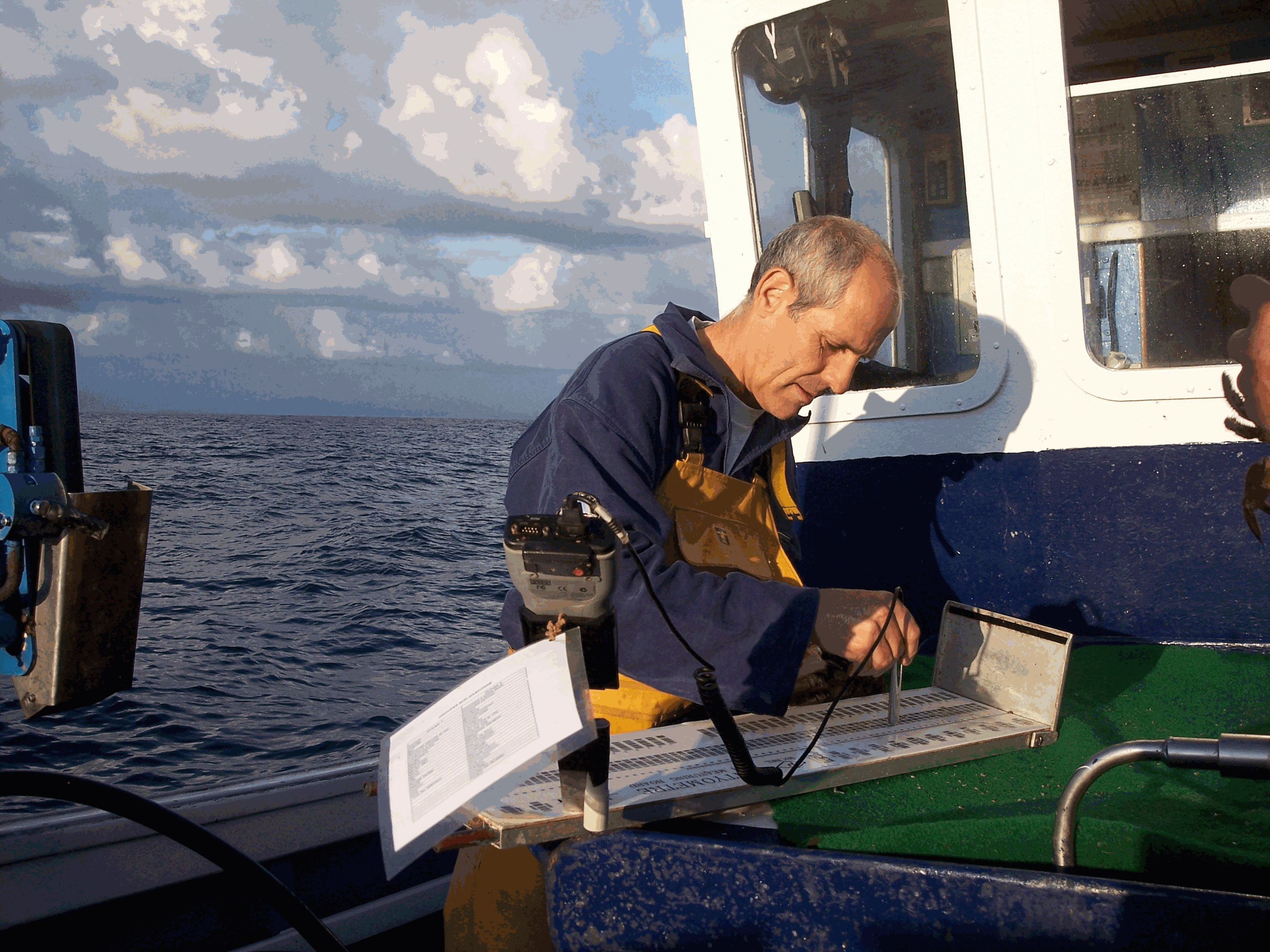Observations of activity, catches, discards and causes of discards on board commercial fishing vessels
Data were collected from the regional program LOUPE (Observation of the habitat and associated communities in the context of the fisheries of the Capbreton Canyon). It consisted in the observations of two métiers practiced around the canyon. The observations were carried out between July 2011 and April 2013 on coastal boats. Observations and interviews were made on board commercial vessels.
The longlines used in the hake fishery are semi-pelagic and are deployed on the edge of the Capbreton Canyon. It is an emblematic and major métier benefiting from a particular regulation as they take advantage of a prohibition of net and trawl fishing on their fishing grounds. Between 8 and 14 costal boats practice this métier during the year and the fleet characteristics are homogeneous. Boats lay between 1,200 and 1,800 hooks per day, baited with frozen pilchard (Sardina pilchardus). Two or three men are on board these vessels. Fishing is mostly practiced in spring and summer but a small number of vessels work all year. Generally, trips last between ten and twelve hours; longline is set before sunrise and retrieved three or four hours later. Hake is the main targeted species; other targets are pollack (Pollachius pollachius), red sea bream (Pagellus bogaraveo) and conger (Conger conger).
Netting is a major métier in terms of vessels involved and the number of trips. Crew composition varies and depends on boat length (from one to four men on average). This métier is practiced by 30 to 35 boats all year round, but fleet characteristics are less homogeneous than in the case of longliners . The strategy of these netters operating in the coastal area is based on the use of several types of nets (gillnets and trammel nets) targeting several species, often sold directly to consumers on the docks. Gillnets, consisting of a single mesh, target hake, sea bass and sea bream species (Diplodus spp, Sparus aurata, Litognathus mormyrus), while the trammel nets (three meshes) are used to capture benthic fish, such as common sole, monkfish (Lophius spp), turbot and brill (Scophthalmus rhombus). Generally, trips last less than twelve hours for coastal netters (less than 15 m), which predominate in the sector, and a few days for large netters. On average, the coastal vessels set 6000 to 8000 m. nets daily.
Simple
- Date (Publication)
- 2015-11
- Date (Revision)
- 2025-02-18
- Other citation details
- Morandeau Gilles (2015). Observations of activity, catches, discards and causes of discards on board commercial fishing vessels. SEANOE. https://doi.org/10.17882/39847
- Theme
-
- Fisheries and aquaculture
- Use constraints
- Other restrictions
- Other constraints
- Individual data are confidential; only aggregate data (more than 3 vessels) are diffusible. It is the sole responsibility of the user to assess if the data are appropriate for his/her use, and to interpret the data, data quality, and data accuracy accordingly.
- Date (Publication)
- 2015
- Unique resource identifier
- 10.1016/j.fishres.2014.11.019
- Association Type
- Cross reference
- Initiative Type
- Study
- Date (Publication)
- 2014
- Unique resource identifier
- 10.1016/j.marpol.2014.02.022
- Association Type
- Cross reference
- Initiative Type
- Study
- Metadata language
- English
- Topic category
-
- Oceans
))
- Distribution format
-
-
PDF
(
)
-
CSV
(
)
-
PDF
(
)
- OnLine resource
-
Texte
(
WWW:DOWNLOAD-1.0-link--download
)
Data description - 40 KB
- OnLine resource
-
Quality controlled data
(
WWW:DOWNLOAD-1.0-link--download
)
Landing - 364 KB
- OnLine resource
-
Processed data
(
WWW:DOWNLOAD-1.0-link--download
)
Characteristics of fishing operations - 12 KB
- OnLine resource
-
Quality controlled data
(
WWW:DOWNLOAD-1.0-link--download
)
Discards - 4 KB
- OnLine resource
-
Quality controlled data
(
WWW:DOWNLOAD-1.0-link--download
)
Others discards - 4 KB
- OnLine resource
-
Quality controlled data
(
WWW:DOWNLOAD-1.0-link--download
)
Trip economic parameters - 3 KB
- OnLine resource
-
Quality controlled data
(
WWW:DOWNLOAD-1.0-link--download
)
Registration criteria for discards - 1020 bytes
- OnLine resource
-
Quality controlled data
(
WWW:DOWNLOAD-1.0-link--download
)
Characteristics for boats - 672 bytes
- OnLine resource
- DOI of the product ( WWW:LINK-1.0-http--metadata-URL )
- OnLine resource
- Seanoe ( rel-canonical )
- Hierarchy level
- Dataset
- File identifier
- seanoe:39847 XML
- Metadata language
- English
- Character set
- UTF8
- Hierarchy level
- Dataset
- Date stamp
- 2025-02-18
- Metadata standard name
- ISO 19115:2003/19139
- Metadata standard version
- 1.0
Overviews

Spatial extent
))
Provided by

 Catalogue PIGMA
Catalogue PIGMA